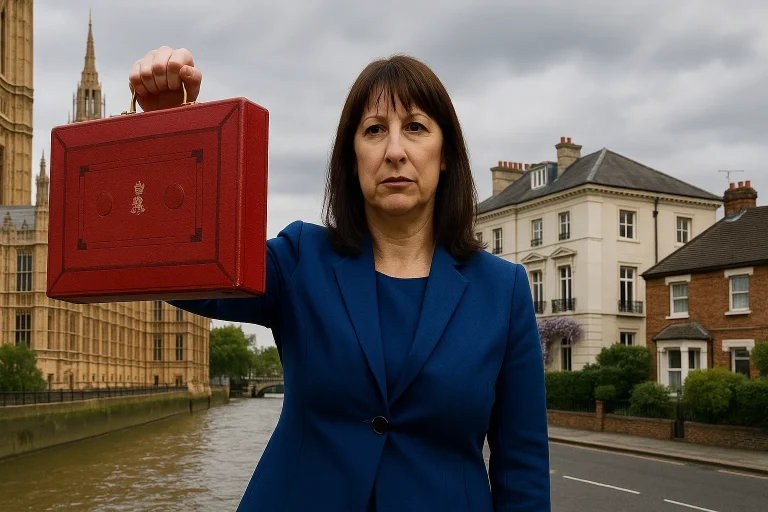Have you ever wondered how long a bankruptcy can follow you on your credit report, even after you’ve turned your finances around?
In the UK, bankruptcy is often viewed as a last resort for individuals facing overwhelming debt. It can provide legal protection and debt relief, but it also leaves a mark on your financial history that doesn’t vanish overnight. While the bankruptcy process itself typically lasts 12 months, the consequences for your credit profile extend much longer.
This article explores how long bankruptcy stays on your credit file, what can extend that duration, and how you can work to restore your financial reputation.
What Is Recorded When You Declare Bankruptcy?

When someone is declared bankrupt in the UK, it’s not just their debts that are affected. A bankruptcy order is recorded in two key places: your credit report and the Individual Insolvency Register, a public database maintained by the Insolvency Service.
The bankruptcy listing on your credit file is visible to lenders, landlords, utility providers, and sometimes even employers. This record signals financial distress and significantly reduces your credit score. As a result, you may find it more difficult to obtain credit, rent a property, or access financial products.
How Long Does Bankruptcy Stay on Your Credit Report?
A bankruptcy typically remains on your credit report for six years from the date the bankruptcy order was made. This is consistent across all three major UK credit reference agencies: Experian, Equifax, and TransUnion.
The six-year timeline applies even if you are discharged earlier. In most cases, individuals are discharged after 12 months. However, that discharge doesn’t erase the record from your file, it simply ends the legal restrictions placed upon you during the bankruptcy period.
The timeline is summarised in the table below:
| Event | Timeframe |
| Bankruptcy order issued | Day 0 |
| Standard discharge | After 12 months |
| Credit file listing remains | 6 years from bankruptcy date |
| Record removed automatically | After 6 years |
After six years, the record is automatically removed, you don’t need to request its deletion, provided your discharge is complete.
Can Bankruptcy Stay on Your Report Longer Than Six Years?
Although six years is the standard duration, certain circumstances can cause a bankruptcy to remain on your credit file for longer.
If you fail to cooperate with the Official Receiver (the person assigned to administer your bankruptcy), your discharge can be delayed. Without a formal discharge, your bankruptcy remains active and so does the negative mark on your credit file.
More serious issues can lead to a Bankruptcy Restriction Undertaking (BRU) or Bankruptcy Restriction Order (BRO). These are imposed when you’ve acted dishonestly or irresponsibly before or during your bankruptcy, such as:
- Hiding assets
- Taking on new credit knowing you couldn’t repay it
- Giving false information
In such cases, restrictions can be extended for up to 15 years, and while the credit agencies typically remove the original bankruptcy record after six years, the presence of a BRO or BRU can still impact how lenders assess your application.
What Happens Once the Bankruptcy Period Ends?

Once the six-year period has passed and assuming you’ve been discharged, the bankruptcy listing should disappear from your credit report. This removal is automatic and doesn’t require any action on your part.
However, some financial providers, especially mortgage lenders, may still ask if you’ve ever been bankrupt, even after the listing is gone. You are legally required to answer this question honestly.
It’s also worth noting that lenders may keep internal records longer than credit agencies do. So while your report might be clean, your past bankruptcy could still influence future credit decisions.
How Can You Rebuild Your Credit After Bankruptcy?
Although your credit file remains affected during the six-year period, there are several steps you can take to rebuild your financial credibility, even before the bankruptcy listing is removed.
Start by ensuring that your credit report is accurate. After your discharge, check reports from all three major credit reference agencies to make sure:
- The bankruptcy is marked as “discharged”
- Any debts included in the bankruptcy show a zero balance
- No new defaults are listed in error
Being registered on the electoral roll can help verify your identity and improve your credit score. Lenders use this information as part of their identity checks, and it adds stability to your profile.
Another practical step is to consider using a credit builder credit card. These cards are aimed at people with poor credit history. If you use one to make small purchases and repay the full balance each month, it shows lenders that you can manage credit responsibly. Over time, this can help improve your score.
For example, someone discharged from bankruptcy in 2022 might use a credit builder card to cover groceries or fuel. By paying it off in full and on time every month, they gradually demonstrate reliability to potential lenders.
It’s also important to avoid applying for multiple forms of credit in a short space of time. Each application results in a hard search on your file, which can lower your score further if overdone.
Will Previous Bankruptcy Affect Future Loan or Mortgage Applications?

Even after the six-year listing has been removed, lenders may still ask about past bankruptcies. Many application forms specifically include questions like: “Have you ever been declared bankrupt?”
While this doesn’t automatically disqualify you, it can influence the lender’s decision. Some will decline applicants with a history of bankruptcy, especially if it was recent. Others, particularly specialist mortgage lenders, offer products tailored to discharged bankrupts, though often at higher interest rates and requiring a larger deposit.
It’s advisable to wait at least two years after discharge before applying for a mortgage. This gives you time to rebuild your credit profile and show consistent financial responsibility.
Are There Alternatives to Bankruptcy That Affect Your Credit Differently?
Bankruptcy isn’t the only debt solution available in the UK, and it’s often considered the most severe. Depending on your situation, other options may provide similar relief with different impacts on your credit file.
Here’s how the main alternatives compare:
| Debt Solution | Credit File Duration | Impact Severity | Notes |
| Bankruptcy | 6 years | Severe | Public listing, serious impact |
| IVA | 6 years | Moderate to Severe | Flexible repayments, formal agreement |
| DRO | 6 years | Moderate | For low-income, low-asset individuals |
| DMP | Varies | Low to Moderate | Informal, may not be recorded consistently |
Each option has pros and cons. It’s crucial to get advice before deciding, as the most appropriate choice depends on your income, assets, and level of debt.
What Should You Know Before Moving On from Bankruptcy?
Although bankruptcy is often viewed as a financial “reset,” the reality is that its consequences can last for years. For most individuals in the UK, the record will disappear from their credit report six years after the bankruptcy order was made. However, your past may still affect your access to credit, especially for significant financial products like mortgages or business loans.
Being proactive about checking your credit file, correcting any inaccuracies, and adopting responsible borrowing habits can significantly speed up the recovery process. Bankruptcy does not define your future, but rebuilding your financial credibility takes time and discipline.
Frequently Asked Questions
Will the bankruptcy be removed exactly six years from the order date?
Yes, in most cases, the record is automatically removed six years after the bankruptcy order date, assuming you’ve been discharged.
Can lenders still ask about my bankruptcy after it’s removed from my credit file?
Yes, lenders especially mortgage providers, may ask if you’ve ever been bankrupt, and you must answer truthfully.
Can I rebuild my credit before the six years are over?
Yes. Actions like paying bills on time, using a credit builder card, and checking your credit reports can improve your score even while the bankruptcy is still listed.
What if my credit file still shows the bankruptcy after six years?
If the record hasn’t been removed after six years, contact the credit reference agencies with proof of your discharge. They are legally required to update your file.
Can I apply for a mortgage while the bankruptcy is still on my file?
It’s possible, but more difficult. Some specialist lenders offer mortgages to those with a bankruptcy history, but usually with stricter terms.
Is a DRO or IVA better than bankruptcy?
It depends on your financial circumstances. Each has different eligibility criteria and implications for your credit file. It’s best to seek debt advice.
Will a BRO or BRU extend my credit file listing beyond six years?
While a BRO or BRU may not extend the credit file listing itself, the extended restrictions can influence lender decisions and future creditworthiness.




